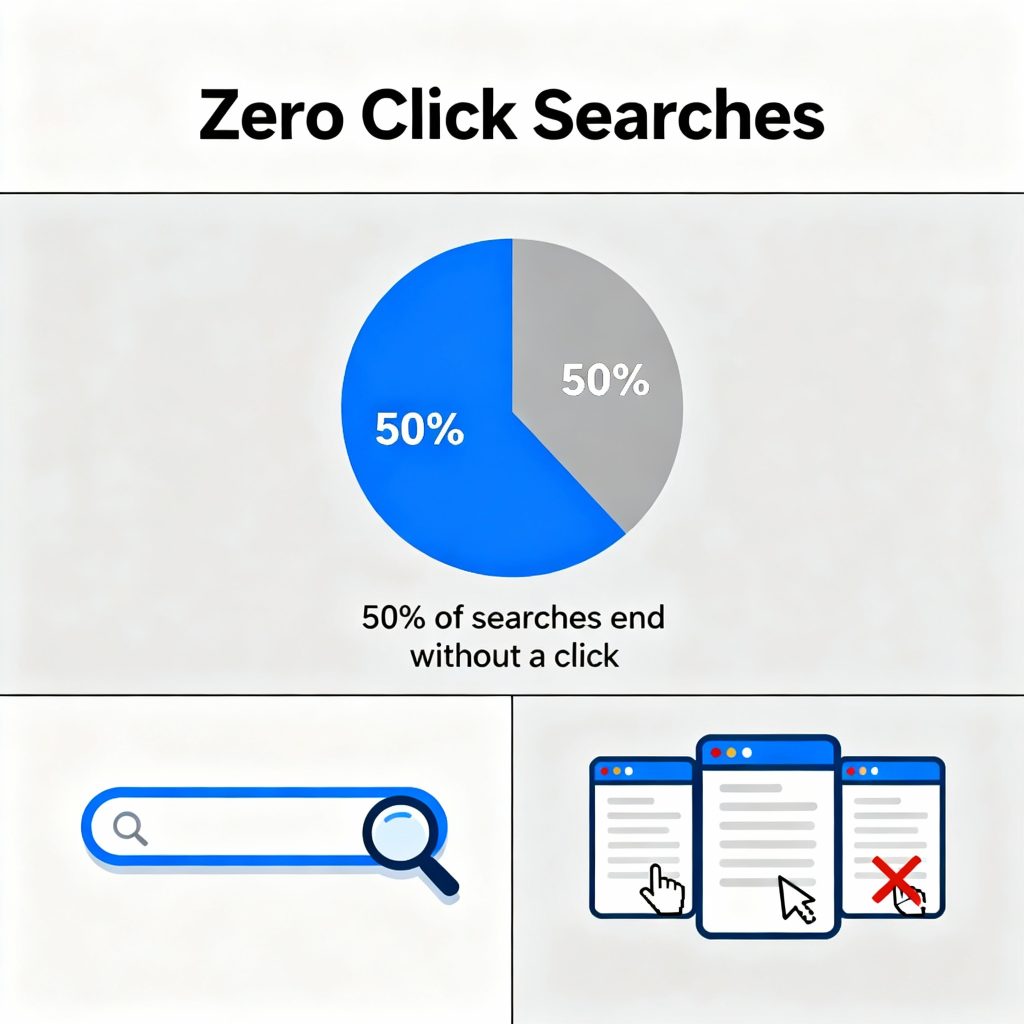A primary critique of Google is that users interact with almost all of its features without actually going to the site itself. These users almost never have to click onto an actual site. Missing links are sometimes known as zero-click searches. Google has featured snippets, knowledge panels, and quick answer boxes that provide the desired information without the click, getting the answer almost instantly.
Clicking and searching are the primary activities on Google, and the percentage of Google searches done without clicks is rising to 50%. For the website owners and marketers, that could be an alarming prospect. The good news is that zero-clicks searches are not completely detrimental. With the right approaches to these strategies, you can use zero-clicks searches to your advantage and gain traction on your brand.
In this post, we will demonstrate how to strengthen your zero-click searches strategies while enhancing the traffic and engagement you retain.
Importance of Zero-Click Searches
Winning the zero-click searches is not an easy feat. Google’s primary intention is clear. It focuses on giving its users the quickest and most accurate response. Google’s pointers have to be adapted as per the marketer’s approach.
These include zero-click results:
- Featured snippets (e.g., summaries, lists, or tables)
- People Also Ask boxes
- Knowledge panels (information boxes on the right side)
- Definitions and conversions
- Maps and business listings
These features on a SERP (Search Engine Results Page) commonly appear at the very top of the page, above the traditional search results. Hence, being visible here provides additional exposure for your brand, even if deep funnel clicks are not achieved.
How to Optimize for Zero-Click Searches
1. Target Questions and Conversational Keywords
Zero-click searches often are the result of question queries such as:
- “What is SEO?”
- “How to make a digital marketing plan?”
- “Best time to post on Instagram”
Utilize AnswerThePublic, AlsoAsked, or even Google and the People Also Ask box to see what questions come up in your industry. Then make content that answers these questions completely.
2. Write Clear and Concise Answers
If you want to be included in a featured snippet, you must organize your content to help Google make sense of what to extract, such as:
- Answer the question by using short paragraphs of 40-50 words.
- Provide lists in bullet or numbered format where possible.
- Always start a subsection using the keyword/question (e.g.,”What is content marketing?”).
What is a featured snippet?
A featured snippet is a short direct response which Google gives focus to and displays at the top of search results to provide a direct answer to a user’s question.
3. Implement Schema Markup
Schema (or structured data) helps Google better comprehend the intent of your content. Add markup for:
- FAQs
- How-to content
- Reviews
- Products
Tools like Google’s Structured Data Markup Helper and WordPress plugins like Yoast SEO can assist you for free.
4. Enhance for Brand Presence
While users do not get to click, they get to see your brand. Ensure the following:
- Your brand is visible in the snippet.
- Your meta title and description are strong (regardless of it not being shown, it is important for clicks when it is).
- Your content has a strong CTA at the beginning in order to maximize engagement.
5. Increase Click Through Rate with Additional Value
Provide users extra incentives to click and gain additional value. For example:
- Provide the answer but promise to provide more details.
- Use the words “Learn more,” “See examples,” or “Free template inside.”
- Provide tools, checklists, or other downloadable materials that are not shown in the snippet.
Conclusion: Do not avoid zero-click: use it strategically.
Even though zero-click searches might appear frightening, they provide another opportunity to be visible to Google. You may increase brand visibility, authority, and trust — without spending on ads — by strategically optimizing for featured snippets and other SERP functionalities.
Most importantly, you need to give users direct value while giving them reasons to click on your site. Ultimately, it’s not about the number of clicks: it’s about what your audience sees first.

